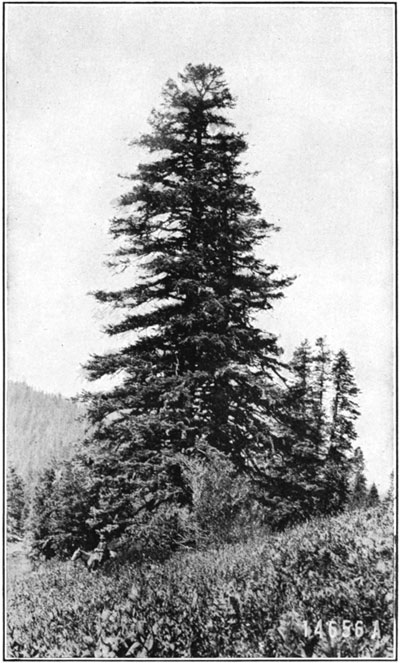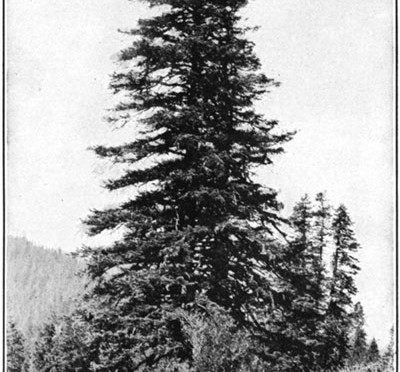Forests of Crater Lake National Park
Shasta Red Fir (Abies Magnifica Shastensis)
The tree flora of the southern Cascades also includes several other species of the true firs that in a large part form the forest cover at the higher altitudes. One of these, the Shasta red fir (Abies magnifica shastensis), is a large tree, with a magnificent round, red-brown trunk, that nearly equals in size the largest white firs of the region. The rigid dark-green needles curl upward along the top sides of the twigs that stand out in stiff radiating sprays from the leaders and lateral limbs. The cones, which ripen in early fall, stand primly erect, are about 5 inches high, and have short, crinkled, yellow bracts projecting a short distance out from between the scales. When the cones have ripened their seed and commence breaking up in September their outer surface is a rich, brownish purple, while the inside of the scales and the seed wings are of various shades of rose and red-brown.
Shasta red fir (fig. 11) is comparatively abundant in the park, from 6,000 to 8,000 feet, being scattered with other species, mostly in cool, moist hollows and on shaded, moist slopes. On the Rogue River side Shasta red fir descends the mountain slopes and canyons to an altitude of about 4,000 feet, occasionally forming a considerable percentage of the stand of timber.

Fig. 11—Shasta red fir (Abies magnifica shastensis).
This tree grows naturally in the southern Cascades and Oregon and southward in the California Sierras. Throughout much of its range it is accompanied by a closely related species, the California red fir (Abies magnifica), that differs from it only in the structure of its cones. The red fir is a very important timber tree in the high Sierras of California.
Other pages in this section
*** previous title *** --- *** next title ***


